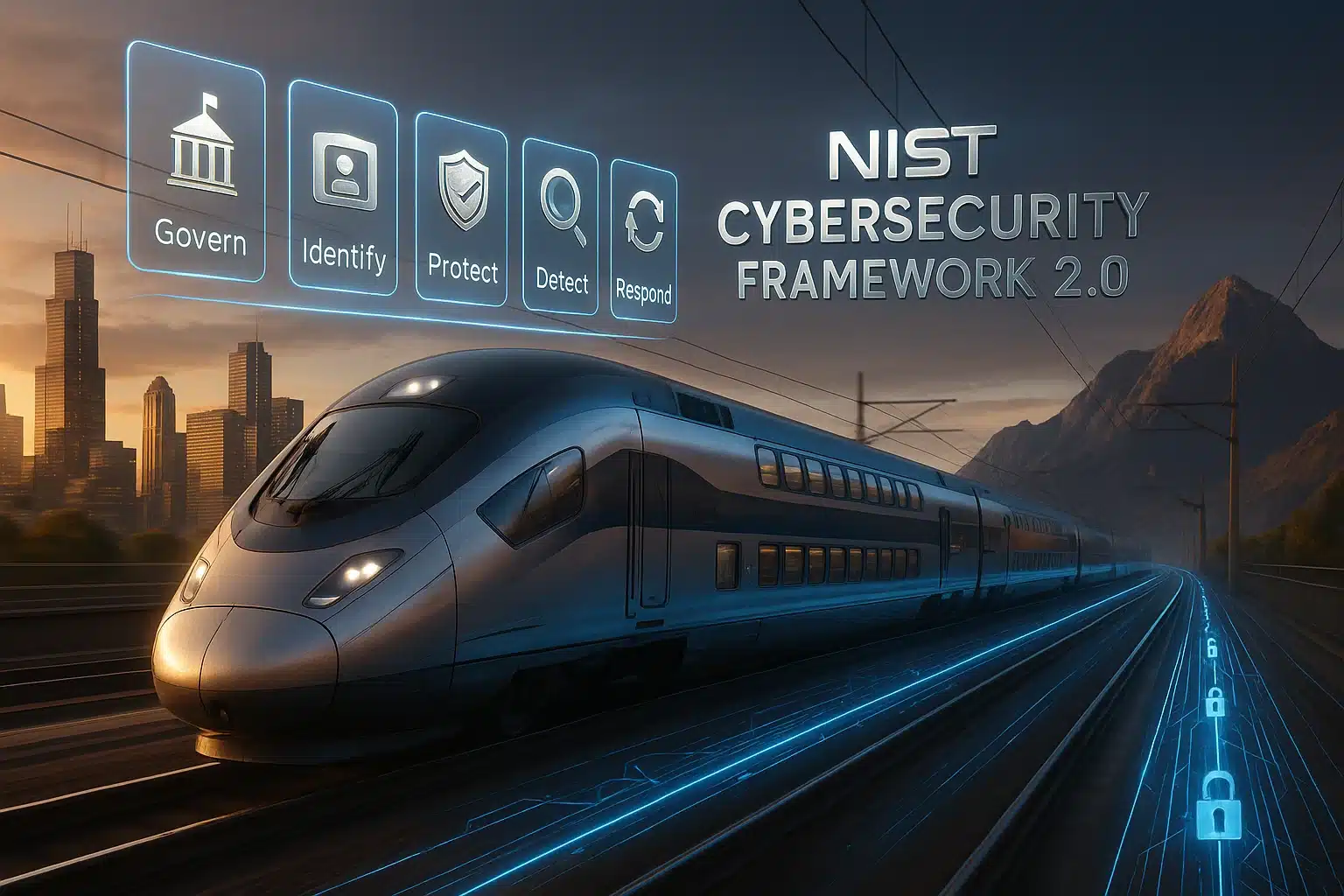Integrating NIST CSF 2.0 into Rail Cybersecurity Strategies: What Every CISO Must Know
As the rail industry embraces digital transformation, the complexity and exposure of operational technology systems are rapidly increasing. In this environment, cybersecurity is no longer just a technical requirement. It is a core element of operational resilience. To meet this challenge, the National Institute of Standards and Technology (NIST) has released the Cybersecurity Framework 2.0, providing an updated and more flexible approach to managing cyber risks across critical infrastructure sectors, including rail.
For Chief Information Security Officers (CISOs), understanding how to align internal cybersecurity programs with NIST CSF 2.0 is essential for enhancing resilience, satisfying stakeholder expectations, and supporting long-term operational goals.
Why NIST CSF 2.0 Matters for Rail Operators
NIST CSF 2.0 is a major update that builds upon years of global cybersecurity best practices. The new version expands the framework’s relevance beyond information technology, reinforcing the importance of governance, supply chain security, and continuous improvement.
What makes NIST CSF especially relevant to rail is its adaptability. The framework is not prescriptive. Instead, it allows operators to tailor implementation based on the maturity level, risk profile, and business objectives of their organization. This flexibility is critical in the rail sector, where legacy assets often coexist with modern digital systems.
Key Functions and How They Apply to Rail Cybersecurity
The updated framework includes six core functions: Govern, Identify, Protect, Detect, Respond, and Recover. Each plays a distinct role in strengthening cybersecurity posture.
- Govern: This new function emphasizes leadership, accountability, and policy. In rail, this includes defining cybersecurity roles across departments, establishing a governance board, and aligning with national standards such as TSA directives or the NIS2 directive in Europe.
- Identify: Understanding the full inventory of rail assets, interdependencies, and vulnerabilities is foundational. This applies to both fixed infrastructure, such as signaling and control systems, and mobile components, such as rolling stock and onboard devices.
- Protect: Implementation of safeguards such as network segmentation, access control, encryption, and employee training falls under this function. These are essential for maintaining safe and uninterrupted rail operations.
- Detect: Real-time monitoring, anomaly detection, and alerting are critical for timely threat identification. Cervello provides tools that support this function with a rail-specific focus.
- Respond: Every operator needs a well-defined incident response plan that includes containment, communication protocols, and documentation procedures. These processes must align with both internal governance and regulatory expectations.
- Recover: Ensuring a safe and coordinated return to normal operations after a cyber event is often overlooked. In the rail sector, recovery includes validating system integrity, verifying the safety of automated functions, and restoring passenger services.
Creating a Roadmap for Implementation
To effectively adopt NIST CSF 2.0, CISOs must begin by assessing their current capabilities against each framework function. From there, gaps can be identified, prioritized, and addressed with a clear roadmap.
Engaging internal teams across engineering, IT, safety, and operations is essential. Cybersecurity cannot be managed in isolation. It must be integrated into business operations and maintenance processes. A phased approach, starting with risk identification and governance, often yields the best results.
Demonstrating Cyber Resilience to Stakeholders
NIST CSF 2.0 also provides a common language for communicating with executive leadership, regulators, and external partners. Rather than focusing solely on vulnerabilities, CISOs can present a structured maturity profile that highlights strengths, progress, and risk mitigation strategies. This helps build trust and ensures cybersecurity remains a strategic priority at the highest levels of the organization.
How Cervello Supports Framework Alignment
Cervello’s platform enables rail operators to visualize their network, monitor for anomalies, and track compliance with industry standards. Our visibility and reporting capabilities help CISOs align with key functions of the NIST framework, especially in the areas of detection, governance, and incident response.
Conclusion: Building the Future of Secure Rail Operations
NIST CSF 2.0 is more than a guideline. It is a blueprint for long-term resilience. By integrating its principles into cybersecurity strategies, rail CISOs can establish stronger control, improve coordination across departments, and ensure readiness for emerging threats. In a connected and fast-evolving landscape, this proactive approach is not just beneficial. It is essential.

